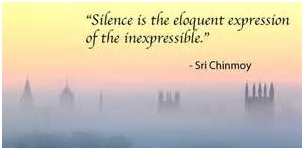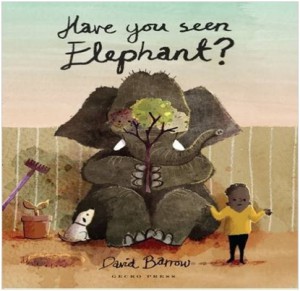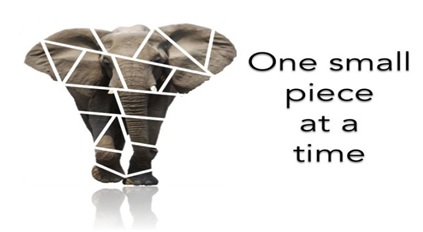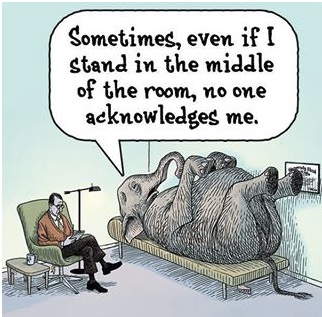 |
| Martin Hill, Senior Tutor BSC |
“
Endings are not always a bad thing; it just means that something new can begin” PictureQuotes.com
In this blog I thought it may be useful to draw on the lessons I have
learned from my own coaching and supervisory practice relating to
endings in a coaching relationship.
Ironically, before I explore the topic of endings, I need to look at
beginnings. Stephen Covey (“Seven Habits of Highly Effective People”)
highlighted that Habit Two is “Begin with the End in Mind”. What does
that mean? www.businessballs.com (accessed 25/03/16) states “Covey calls
this the habit of personal leadership – leading oneself that is,
towards what you consider your aims. By developing the habit of
concentrating on relevant activities you will build a platform to avoid
distractions and become more productive and successful.” Ok – so what
does that mean for you as a coach? For me, it means ensuring that your
coaching preparations lay the foundations for the whole of the
relationship, including planning the ending phase-but more on that
later.
Enough of the beginnings, already – let’s get to endings. The title
of the blog is not a typographical error – as a coach you may encounter a
variety of endings in the course of a coaching relationship. In the
course of a recent group supervision discussion I facilitated at a
British School of Coaching UK
Coaching Network, asking the group of
coaches what they understood “endings” to mean, generated the following
insights:
• The end of a topic/goal discussion within a session, so that the discussion moved to the next topic/goal
• When, and how, to draw a session to an end (linking in to time management of the session)
• The ending of the coaching relationship itself – this prompts me to
pose the following questions for you, dear reader, to reflect on for
your own coaching practice:
– Was the ending planned or unplanned?
– What was the catalyst for the ending?
– Who ended the relationship –coach or coachee?
– How was it ended?
• How does one know when a goal/objective has been achieved and thus
can be ended? How are outcomes reviewed? Who is involved in that
review-coach alone? Coachee alone? Coach and coachee? Coach, coachee and
organisational sponsor?
The other nervousness highlighted when discussing endings with my
coach supervisees, is how to actually deal with the topic of ending with
the coachee. One approach is what I describe as the “It’s not you, it’s
me” style conversation. Even writing that phrase, I could feel the
aftershock-like tremors of memories being jogged by the earthquake shock
of painful reminiscences of long ago relationships!! Remember having
those conversations, or being on the receiving end of one? How did that
feel? How long before you stopped dissecting the ins and outs?
One of the risks of the “It’s not you, it’s me” style in a coaching
relationship is that it masks the real reasons for the ending. If you
are operating a professional and ethical coaching practice, I am sure
that the values of honesty, openness and transparency are of fundamental
importance to you. The ending will be easier for you and the coachee to
deal with if it is discussed in an open, objective and evidenced
fashion. For example – “Our discussions about topic x, are outside my
field of experience and I think that a different coach with that
knowledge may be more useful for you. I may be able to help you with
finding that coach if you would like.”
What about another approach? Remember my promise to return to the
planning phase? When I am agreeing my coaching contract/agreement with
the coachee and organisation I ensure that my planning includes
anticipating potential endings. This means that we agree who, how and
when can terminate the coaching relationship. Notice anything missing
from that list? My contract does not specify grounds/examples for the
coaching relationship to be terminated. This is because I identified
that this could be a barrier to the issue being raised, especially for
the coachee potentially, and this in turn would mean that the
effectiveness of the coaching relationship would be diminished.
However, it’s YOUR contract and YOUR choice what goes in to it.
The other feature in my coaching contract/agreement with the coachee
and organisation, and which I draft together with them, are what I
describe as my “expectations” section. I outline what the
coachee/organisation can expect from myself as the coach (and sometimes
specify what it does not include, e.g. I am not here to provide advice
to you) and also what I expect from them as coachee/organisation – e.g.
punctuality; to turn up with pen and paper; to take ownership for the
agreed actions.
The beauty of the coaching contract/agreement approach is that this
provides a depersonalised mechanism to review the effectiveness of the
relationship and discuss and decide if ending is appropriate. The
contract/agreement can focus on behaviours that were agreed, but which
have not been honoured etc. As a coach, I find that this gives me a
mechanism to challenge the coachee and this usually serves as a prompt
to bring them back on track.
Here are some of the factors that I have noticed that help build an
effective and successful framework for dealing with endings within the
coaching relationship:
• Contracting – Take time to identify all the players involved as
there may be a multiplicity of parties- for example, coach, coachee,
sponsor (HR), line manager, department head, organisation etc. etc. This
also influences what documentation may be needed – for example the
“formal” legal contract (dealing with fees, deliverables, termination,
confidentiality etc.) needs to be agreed with the “sponsor”, but I also
ensure that the coachee in these situations completes a coaching
agreement which outlines what they can expect from myself as the coach,
what is expected of them, confidentiality and termination and
cancellation). Think what may be needed for your own practice. Review
your coaching agreement/contract. Does it cover what they can expect
from you as the coach and what is expected from them as the coachee?
Does it cover termination? If not – what are you going to do?
• Values/beliefs – Let me paraphrase a quotation “To coach others,
you must first know yourself”. Not only do you need to ensure that you
know your own values and beliefs, you must make sure that your practice
and behaviours are consistent with them- this can often avoid unexpected
endings from arising in the first place.
• Know when to say “No”- If there is no beginning, there can be no
end – so be clear who you decide to coach and/or be clear about what
actions you are prepared to undertake as coach (e.g. notes; chase ups;
out of session contact etc. etc.).Reflect on those choices and challenge
and review them regularly.
• “Permissions”- If in doubt, ask – seek permission from the coachee
to check things out. Really useful, for example, when dealing with the
outcomes review. I would recommend that as a minimum this should be done
by the coach and coachee together; but why not also consider inviting
the line manager/organisational representative to part of the review
session, with the coachee’s permission. (See my blog on permissions
here)
• Regular Reviews – earlier in the blog I mentioned planned and
unplanned endings. A planned ending could arise where you have agreed to
undertake, for example, five sessions. A good practice to develop is to
introduce regular reviews, mine, for instance is after every 3rd
session. This is simply a quick “coaching MOT” check – are you content
with the relationship; does anything need changing; are actions being
generated? Is value being added? If the answers to any of these are
negative then this is a prompt to recontract and agree, or, to agree to
end the relationship. Unplanned endings can, as the name implies, arise
at any time. The same approach of discussing and recontracting or
agreeing to end the relationship.
• Boundary Management – make sure that you know the boundaries for
your own competence- and do not overstretch. Also make sure you do not
stray into counselling or advising mode. I would also suggest reflecting
on the hypothetical situations when you would decide that you would
have to end the coaching relationship. Review those situations – are
they covered in your coaching contract/agreement? If not – time to
review and revise.
• “I’m OK, You’re OK”- endings can be emotional – make sure that you
check that the coachee is ok and can get back ok. Similarly, give
yourself time to review, recollect yourself, reflect and reboot.
• Location – This links in to the topic above- if you anticipate that
the relationship may be coming to an end in the next session,
especially if you anticipate emotional or difficult responses, plan
where and when to hold that session – the primacy concern being that of
safety for yourself and the coachee.
• Supervision/Support – Endings can generate emotional responses-
both conscious and sub-consciously. Reflect on the support networks you
have to draw upon (supervision, peers etc.) – is anything else needed or
are these sufficient? What did you do to recalibrate? Could that be
used again? Could that be improved?
• Adopt a 3R Evaluation Approach – Review, Reflect & Revise –
following each coaching session that you conduct, seek feedback from the
coachee, but also take time to review the session, reflect on what you
did and what the effect was; also consider what worked well, what could
have been improved on or what could have been done differently. Finally,
if the reflection leads you to conclude that something needs to change,
and then revise your approach before the next session. Does the ending
generate the need to review and revise your coaching contract/agreement
or coaching approach?
I hope that this has provided a catalyst for your own thoughts and
reflections and I would be interested to hear from you with your own
comments or observations.
In my next blog, I will look at the content of coaching relationships and the art of elephant spotting!!
For more blogs like this visit
www.britishschoolofcoaching.com/blog/









 Well I hope that this has provoked some thinking and provided some
insights for purchases. Remember that as a member of ISQC we have
secured discounts from some of the publishers – email
ISQC@britishschoolofcoaching.com for more details.
Well I hope that this has provoked some thinking and provided some
insights for purchases. Remember that as a member of ISQC we have
secured discounts from some of the publishers – email
ISQC@britishschoolofcoaching.com for more details. Director for ILM 7 Coaching & Mentoring Courses
Director for ILM 7 Coaching & Mentoring Courses








